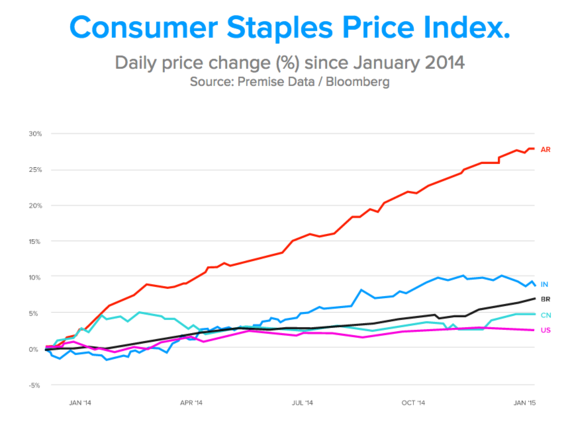When I first left journalism, I went to work for an expert research network that served hedge fund investors. These networks got a bad name after scandals where expert networks sourced employees at publicly traded companies or other people with illegal inside information and put them on the phone with major hedge fund heavies. We never dealt with anyone inside a public company or anyone with real inside information.
Rather, we tried to put together a mosaic of sources of data for investors to tap into. For example when one of our clients was tracking video game sales, he might call managers we had found at dozens of independent small video game or electronics stores around the country to find out how a new title was selling. Investors called this "channel checks." It was cumbersome work and the investors paid a huge premium for our help. On my end, too, it was very difficult because you had to find people that were knowledgeable enough of the sector and general conditions to provide useful context to very smart hedge fund analysts that did not appreciate wasting time on the phone.
On September 24 a company called Premise got a $50 million venture capital round from some of the heaviest hitting VCs including Andreessen Horowitz and Google Ventures. Premise has essentially built the world's largest channel check machine by building a technology stack to connect 25,000 people around the world to requests from large institutions. These people, largely outside of the U.S. earn small bits of money for doing quick field research.
How would this work?, if the World Bank wants to understand the true impact of food rationing in Venezuela, they might turn to Premise and pose some questions. Premise then beams the request out to its on-demand team members in Venezuela on the ground. Those team members will go to a nearby grocery store, snap pictures and answer questions. They then send that data back to Premise, which applies machine learning algorithms and other Big Data prowess to convert the raw data into real insights.
In fact, Premise is not the first or only company to attempt this. A U.S. company called GigWalk has been doing similar things, albeit in the U.S. and with a slightly different focus. Multiple small consulting and services companies have feet on the street in malls across America, in casinos, and in parking lots of shopping centers counting bodies, checking store inventories, and doing other channel check grunt work.
But Premise is much more ambitious and important effort. Here's why. Every smartphone is a sophisticated compute node on a global sensor platform. First comes things likes images and simple observations. In the future, Premise will be able to ship out tiny sensors to attach to the phones that will turn those people into a giant network of air quality sensors, water quality monitoring labs, or any other sort of environmental test you can imagine. This also opens up the tantalizing possibility of vastly improved economic data indicators.
Those indicators could even be updated daily or hourly, helping us understand what's really happening on markets around the world. This matters because market fluctuations and economic disasters hit the poor hardest.
Already, Premise is doing some pretty amazing things. Using its crowd, Premise is collecting data on food staple prices in Argentina, Brazil, China and India. In those countries, data collection is not always accurate or might be slow and incomplete. Premise has a contract with Bloomberg to publish staple indexes via its huge network of terminals. This gives government officials, forecasters, analysts, and, yes, traders, a huge advantage in understanding what's really happening on the ground. Premise call this a "nowcast."
To understand how powerful this is, consider that Premise is also collecting data on U.S. food staple prices. Compare that to the current U.S. Federal government data collection process -- an army of inspectors that drive around to stores once a month. Obviously, the Premise approach is both more scalable and more affordable.
For markets outside the U.S., the nowcast already significantly betters government data collection. The U.N. Food and Agriculture Organization found that Premise's Food Staples Index for key food products in Brazil may predict price and availability trends 25 day ahead of government monthly releases. This also illustrates how the power of a connected crowd can top government efforts at data collection and provide a more flexible alternative, as well. Many of the rigid government indexes are highly outdated but continue because it's hard to change them.
With an outfit like Premise, you can simply add a few more lines of information inquire and simultaneously mount a new collection. I am really excited to see where this goes. And it will only get more amazing as connectivity improves, sensors get cheaper, and smartphones proliferate even more widely across the world. Soon, any company, any government, an NGO will be able to build a nowcast to collect data that will help it make better decisions. That, in my mind, will lead to a better world.

